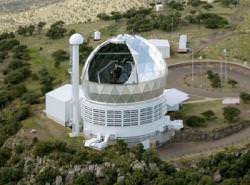When you look at the ground beneath your feet, you’re looking at matter created in the heart of stars at the end of their lives. Some of the heavier elements were fashioned in the supernovae explosions of massive stars. And in many cases, these elements went through several generations of stars. So it was a tremendous surprise this week when astronomers discovered planets orbiting a metal poor star.
The discovery was made by a team of researchers from the University of Texas using the 9.2-metre Hobby-Eberly Telescope at McDonald Observatory. They found a system of two Jupiter-like planets orbiting a star that’s so low in metals that it shouldn’t have planets at all.
But there they are.
The star is known as HD 155358, and the planets were discovered using the radial velocity method, where the gravity from the planets pull the star back and forth with a velocity we can detect here on Earth. This allows astronomers to calculate their mass and the length of their orbit.
One planet has an orbital period of 195 days and has 90% the mass of Jupiter. The other takes 530 days and has 50% the mass of Jupiter. They actually orbit so close to one another, that they must gravitationally interact. They push each other around.
A commonly-held model of planetary formation requires that there are large quantities of heavy metals present in the protoplanetary disk. Finding such a low metal star, but still with two planets around it, is an impressive find, and will give astronomers reason to reconsider their theories.
Original Source: UT Austin News Release

